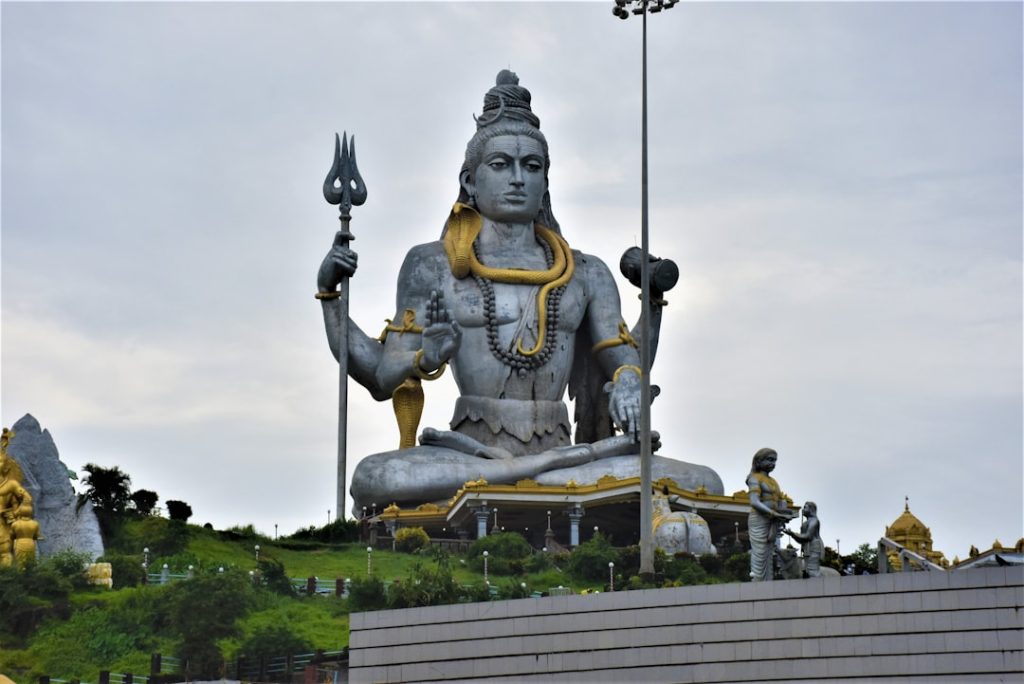Chandrayaan 3 represents a significant milestone in India’s ambitious space exploration program, particularly in its quest to explore the lunar surface. Launched by the Indian Space Research Organisation (ISRO), this mission is a continuation of India’s lunar exploration efforts, following the earlier Chandrayaan 1 and Chandrayaan 2 missions. While Chandrayaan 1 was instrumental in discovering water molecules on the Moon, Chandrayaan 2 aimed to land on the lunar south pole but faced challenges during its landing phase.
Chandrayaan 3 is designed to build upon these experiences, focusing on achieving a successful soft landing on the Moon and conducting scientific experiments that could enhance our understanding of lunar geology and resources. The mission is characterized by its streamlined approach, primarily focusing on the lander and rover components, as opposed to the orbiter included in its predecessor. This decision reflects ISRO’s commitment to refining its technology and methodologies based on past experiences.
The Chandrayaan 3 mission is not just a technical endeavor; it embodies India’s growing capabilities in space technology and its aspirations to be a key player in global space exploration. As nations around the world intensify their lunar ambitions, Chandrayaan 3 stands as a testament to India’s resolve to contribute meaningfully to our understanding of the Moon and beyond.
Key Takeaways
- Chandrayaan 3 is India’s third lunar exploration mission, following the successful Chandrayaan 1 and Chandrayaan 2 missions.
- The main objectives of Chandrayaan 3 are to demonstrate the ability to soft-land on the moon and conduct scientific experiments on the lunar surface.
- Key components of Chandrayaan 3 include a lander, rover, and orbiter, equipped with advanced technology for navigation, communication, and scientific research.
- The timeline for Chandrayaan 3’s launch is set for 2022, with the mission aiming to land near the lunar south pole.
- Chandrayaan 3 holds significant importance for India’s space exploration efforts, as it will contribute to the country’s advancements in lunar research and technology.
- The mission involves collaboration and partnerships with various international space agencies and organizations, showcasing India’s growing presence in the global space community.
- Challenges and risks associated with Chandrayaan 3 include the complexities of soft-landing on the moon and ensuring the functionality of the mission’s scientific instruments in the lunar environment.
- The potential discoveries from Chandrayaan 3 could lead to new insights into the moon’s geology, mineralogy, and potential resources, paving the way for future lunar exploration and utilization.
Objectives of Chandrayaan 3
The primary objective of Chandrayaan 3 is to achieve a successful soft landing on the lunar surface, specifically targeting the unexplored regions of the Moon’s south pole. This area has garnered significant interest from scientists worldwide due to its potential water ice deposits, which could be crucial for future lunar exploration and even human habitation. By landing in this region, ISRO aims to gather data that could inform future missions and enhance our understanding of the Moon’s composition and history.
In addition to the landing, Chandrayaan 3 is equipped with scientific instruments designed to conduct various experiments on the lunar surface. These include analyzing soil samples, studying the Moon’s topography, and measuring seismic activity. The mission aims to provide insights into the Moon’s geological processes and its evolution over billions of years.
Furthermore, by focusing on in-situ resource utilization, Chandrayaan 3 could pave the way for future missions that may utilize lunar resources for sustaining human presence on the Moon.
Key components and technology of Chandrayaan 3

Chandrayaan 3 comprises several key components that are integral to its mission success. The lander, named Vikram, is designed to execute a soft landing on the lunar surface. It is equipped with advanced navigation and control systems that utilize a combination of sensors and algorithms to ensure precision during descent.
The lander’s design incorporates lessons learned from the Chandrayaan 2 mission, particularly in terms of enhancing stability and reliability during landing. The rover, named Pragyan, is another critical component of Chandrayaan 3. It is designed to traverse the lunar surface and conduct scientific experiments.
Pragyan is equipped with various instruments, including spectrometers and cameras, which will allow it to analyze soil samples and capture high-resolution images of the lunar terrain. The rover’s mobility system is engineered for navigating the rugged lunar landscape, ensuring that it can cover significant distances while conducting its scientific tasks.
Timeline and launch details of Chandrayaan 3
| Event | Date |
|---|---|
| Announcement of Chandrayaan 3 mission | January 1, 2021 |
| Approval of Chandrayaan 3 mission by the Indian government | November 17, 2021 |
| Expected launch date | 2022 |
| Expected landing date | TBD |
Chandrayaan 3’s journey began with meticulous planning and development phases that spanned several years. Initially announced in early 2020, the mission faced delays primarily due to the COVID-19 pandemic, which impacted various aspects of research and development. However, ISRO remained committed to its timeline and made significant progress in refining the technology needed for a successful lunar landing.
The launch of Chandrayaan 3 took place on July 14, 2023, from the Satish Dhawan Space Centre in Sriharikota, India. Utilizing the LVM-3 rocket, ISRO successfully placed Chandrayaan 3 into a highly elliptical Earth orbit before initiating a series of maneuvers to set it on a trajectory toward the Moon. The mission was carefully timed to take advantage of optimal launch windows that would facilitate a smooth journey to lunar orbit.
Following its launch, Chandrayaan 3 entered a series of phases that included lunar orbit insertion and preparations for landing.
Significance of Chandrayaan 3 for India’s space exploration
Chandrayaan 3 holds immense significance for India’s space exploration endeavors, marking a pivotal moment in ISRO’s journey toward becoming a leading player in global space activities. A successful landing would not only demonstrate India’s technological prowess but also solidify its position as one of the few nations capable of conducting soft landings on celestial bodies. This achievement would enhance India’s reputation in the international space community and open doors for future collaborations and partnerships.
Moreover, Chandrayaan 3 serves as a stepping stone for more ambitious missions planned by ISRO in the coming years. The knowledge gained from this mission will inform future lunar explorations and contribute to India’s long-term goals of human spaceflight and interplanetary missions. As countries like the United States, China, and Russia ramp up their lunar activities, India’s successful execution of Chandrayaan 3 could position it as a key player in international discussions regarding lunar governance and resource utilization.
Collaboration and partnerships involved in Chandrayaan 3

The success of Chandrayaan 3 is not solely attributed to ISRO’s efforts; it also involves collaboration with various national and international partners. ISRO has engaged with several academic institutions and research organizations to develop advanced technologies for this mission. These partnerships have facilitated knowledge exchange and innovation, allowing ISRO to leverage expertise from diverse fields such as robotics, materials science, and remote sensing.
Additionally, international collaborations have played a role in enhancing the mission’s scientific objectives. For instance, ISRO has expressed interest in sharing data collected by Chandrayaan 3 with global scientific communities. This openness fosters international cooperation in lunar research and encourages collaborative studies that can lead to groundbreaking discoveries about the Moon’s geology and potential resources.
Challenges and risks associated with Chandrayaan 3
Despite meticulous planning and preparation, Chandrayaan 3 faces several challenges and risks inherent in space exploration. One of the primary concerns is ensuring a successful soft landing on the Moon’s surface. The lunar environment presents unique challenges, including varying gravitational forces, unpredictable terrain, and potential dust interference during landing operations.
These factors necessitate precise navigation and control systems capable of adapting to real-time conditions. Moreover, there are technical risks associated with the lander and rover components themselves. Any malfunction in critical systems such as communication or power supply could jeopardize the mission’s objectives.
To mitigate these risks, ISRO has implemented rigorous testing protocols throughout the development phase, simulating various scenarios that could arise during the mission. Continuous monitoring during flight operations will also be crucial in addressing any unforeseen challenges that may arise once Chandrayaan 3 is en route to or on the lunar surface.
Future implications and potential discoveries from Chandrayaan 3
The implications of Chandrayaan 3 extend far beyond its immediate objectives; it has the potential to reshape our understanding of lunar science and exploration strategies. Should the mission succeed in its goals, it could provide valuable insights into the Moon’s geological history, including information about volcanic activity and impact cratering processes that have shaped its surface over billions of years. Furthermore, discoveries related to water ice deposits at the lunar south pole could have profound implications for future human exploration missions.
Water is a critical resource for sustaining life and supporting long-term human presence on celestial bodies. If Chandrayaan 3 can confirm the existence of accessible water ice reserves, it would significantly enhance plans for future manned missions to the Moon and potentially serve as a stepping stone for deeper space exploration endeavors. In conclusion, Chandrayaan 3 stands as a testament to India’s growing capabilities in space exploration while embodying aspirations for scientific discovery that could benefit humanity as a whole.
The mission not only aims for technological achievements but also seeks to contribute meaningfully to our understanding of one of Earth’s closest celestial neighbors—the Moon.


